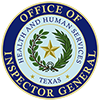Billing for telemedicine during COVID-19
COVID-19 prompted an increased use of telemedicine to connect providers with their patients. Adopted waivers and changes eased technology restrictions and expanded the number of Medicaid services available by telehealth. The significant shift in service delivery and demand due to the pandemic gave rise to new program integrity issues for the OIG to explore, especially in services where telehealth was not previously used.
Working with providers, Managed Care Organizations and other HHS agencies helps the OIG identify risks and collaboratively develop solutions. The areas of potential risk associated with COVID-19 presented here are a result of OIG analysis, stakeholder input, Healthcare Fraud Prevention Partnership information sessions, and collaboration with the National Health Care Anti-Fraud Association.
MCO reimbursement
Provider reimbursement for telemedicine and telehealth averaged less than $800,000 per month in 2019. Reimbursements jumped to $9 million for March 2020 and $43 million for April 2020; reimbursements averaged more than $37 million monthly throughout 2020.
At the direction of HHS’s Medicaid/CHIP Services Division, Texas Medicaid & Healthcare Partnership provided the following guidelines to MCOs to determine if telemedicine services should be reimbursed:
- Medical necessity.
- Clinical effectiveness.
- The telemedicine service provided is cost-effective.
- The telemedicine service is provided in accordance with the law and contract requirements applicable to the provision of the same health-care service provided in person.
- The use of telemedicine promotes and supports patient-centered medical homes.
Potential risk indicators
Multiple services within a brief time
While an increase in overall telemedicine services is expected with the pandemic, certain billing patterns can indicate wasteful errors or possible suspicious activity. One issue of interest is billing for multiple telemedicine or telehealth services on the same client in a short period of time, such as one month or even one day. In general, it is not uncommon to see multiple services, such as counseling or therapy sessions, provided via telehealth more than once a month. However, multiple visits in one month via telemedicine to the same provider may be unusual if they did not occur with that frequency prior to the pandemic.
Examples of behavior indicating potentially improper billing:
- Physicians calling patients as a “follow up” within the same week as a telemedicine visit and billing an Evaluation and Management (E&M) code.
- Physicians performing telemedicine visits, then an in-person visit, with a modifier 25 (separately identifiable service) for the same diagnosis.
- Physicians calling patients they had not recently seen and who had not requested an appointment to “check up” on them and billing an E&M code.
Impossible hours
Providers billing impossible hours occurred prior to the pandemic for behavioral health or therapy services. However, telemedicine services are also vulnerable to overbilling. Using timed procedure codes, providers are flagged in excess of 24 billed hours in a day. There are situations in which telehealth services are billed more than 24 hours by a single provider, due to services being rendered by assistants. If this is the case, it is taken into consideration.
Telephone-only services
Telemedicine provided via telephone–only introduces a new facet in terms of E&M. The Texas Medical Board and HHSC issued guidance regarding billing for telephone calls. E&M services cannot be billed if the physician determines an in-person or video telemedicine visit is required within 24 hours or the next available appointment time, as the services rendered via telephone will be considered part of the office/video visit. If a call follows an office visit within seven days for the same diagnosis, the telephone call is considered part of the previous visit and cannot be billed separately.
COVID-19’s evolving impact on health care delivery necessitates an ongoing exploration of current and emerging program integrity. This includes analyzing encounter data and revising algorithms to detect possible improper payments based on COVID-19 schemes.
Definitions
Using terminology set by state law, Texas Medicaid “telemedicine” services are delivered by a physician, advanced practice registered nurse, or physician assistant acting under the direction and supervision of a physician.
“Telehealth” generally refers to a health service other than telemedicine delivered by a licensed or certified health professional, such as registered nurses, occupational therapists, home health agencies, or licensed professional counselors.

